Hungarian War Graves Can Be Found Even in Japan and Iran
Szöveg: László Szűcs | 2015. január 10. 9:00They have closed an eventful year, and have a lot of tasks ahead this year. This is how Lt.-Col. Roland Maruzs, the head of the MoD Public Relations and War Memorial Service Department Military Traditions and War Memorial Service Section assessed in an interview the work done in 2014 and the tasks to complete in 2015.
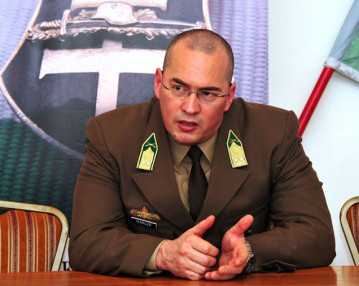
Lt.-Col. Roland Maruzs
Increasing public interest, the centenary of the outbreak of World War I, restored heroes’ monuments and war cemeteries – these are some points to characterize the work done by the war grave care experts in 2014. In Lt.-Col. Roland Maruzs’ opinion, “last year has been a really eventful one", since, as compared to previous years – perhaps due to the 100th anniversary of the outbreak of World War I – there has been a significant increase, not only in the public interest in their work, but also in the number of tasks carried out by the staff of the MoD Public Relations and War Memorial Service Department (MoD PRWMSD) Military Traditions and War Memorial Service Section.
Increased interest in this kind of activity is reflected in the fact that the homepage www.hadisir.hu has had more than 200,000 visitors so far – most of them clicked on the webpage in 2014 – which is a significant number considering that this homepage does not deal with a general topic but with a special field, the lieutenant-colonel said, adding that the homepage has made a huge progress since its launch two years ago, but of course “there is still room to improve".
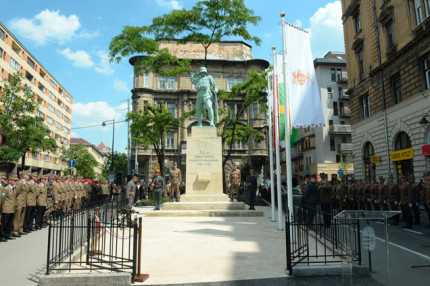
The monument to the 32nd regiment in Budapest
“For the most part, 2014 was shaped by the centenary memorial year. We restored monuments at a great many places. In the spring, we started working in the 32nd regiment’s square in the 8th district of Budapest, where, in cooperation with the local council of the district, we renovated the monument to the 32nd infantry regiment. In addition, we refurbished the heroes’ memorials at several places, for instance in Recsk, Mátraderecske, Narda, Rétság and a number of other municipalities", Roland Maruzs said, adding that a lot of WWI war graves and military cemeteries were restored in the spirit of the centenary.
They carried out a significant amount of work in 2014 by involving NGOs that are willing to cooperate. In the area of Romania, they restored the Uz Valley military cemetery with the help of the Transylvanian Research Group Association, the Kőrösmező (Yasinia) heroes’ cemetery in Subcarpathia in cooperation with the Vigyázók Military and Cultural History Association and the Takcsány (Stakcin) military cemetery in Slovakia in cooperation with the “Beskydy" Club of Military History. These cemeteries are the final resting places of more than 2000 dead soldier heroes.
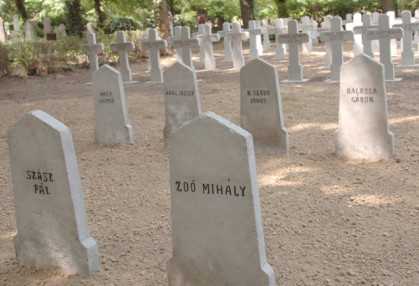
The restored WWI plot in Szeged
“The restoration of a WWI plot in the Reformed Cemetery of Szeged was a nice example of international cooperation. We co-financed it together with the German War Graves Commission (Volksbund Deutsche Kriegsgräberfürsorge), and German and Hungarian soldiers worked shoulder to shoulder during the physical implementation", the lieutenant-colonel said.
The war grave care experts had another job at the end of the year. In cooperation with the Lesser Poland Voivodeship Office, they restored the Limanowa cemetery, the burial place of Hungarian hussars who halted the advance of Russian forces on December 11–12 1914. Together with the Poles, they organized a large memorial service in the cemetery, where Minister of Defence Csaba Hende delivered a commemorative speech.
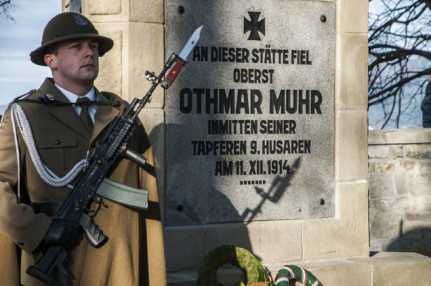
Limanowa, Col. Otmár Muhr’s memorial
War grave care continues to be a priority on the agenda of the Military Traditions and War Memorial Service Department. The head of the department revealed that working together with the MoD Augmentation and Central Register Command (MoD ACRC), they set up a staff of war grave care specialist and tasked it with maintaining the dead heroes’ graves around the country. In each county of Hungary and in the capital, there will be a career or contract officer responsible for coordinating the work of this sub-unit which is assigned to the MoD ACRC but operates under the professional guidance of the MoD PRWMSD with five volunteer operational reservists in each area.
“Earlier there was no such staff in Hungary. The idea of setting it up emerged on our visit to Belarus in 2012. There, it turned out that the Belarus army has a special battalion with duties only in battlefield archeology and war grave care. After returning home, we contacted the Chief of Defence and the State Secretary for Public Administration who supported our idea and issued a joint order to set up a war grave care sub-unit", Lt.-Col. Maruzs pointed out.

WWII memorial in Narda
Speaking about war grave care, the head of the department told us that this year they had evaluated the results of a 2013 war grave survey. During this survey, they contacted every local council to request information about the world war heroes’ monuments and war graves located in the area of the municipalities. “We obtained much less information than we expected, but that said, the survey was still worth doing. We received a lot of registers and photos", Roland Maruzs said, adding that it has become clear that “we have a very mixed picture of the condition of war graves in Hungary". There are some municipalities where the graves are looked after, and there are some where they are in need of restoration.
“We receive a lot of requests from local councils and NGOs for the restoration of monuments and military cemeteries. Lacking financial resources, currently we are unable to fulfill some of these requests", the lieutenant-colonel said. He also told us that out of the 3200 towns and villages of Hungary, 2200 has war memorials. Besides, the experts know of more than 30,000 WWI and more than 10,000 WWII war graves, since almost all major towns had a military hospital or POW camp where “Hungarian and foreign soldiers died by the hundreds or the thousands".

The grave of the unknown soldier in Buda Hills
The war grave care experts know the GPS coordinates of several “unknown soldiers’ graves", but they cannot even estimate the exact number of these memorial sites. “As the Burial Act concerns only cemeteries, we aren’t authorized by law to obtain information about the unknown soldiers’ graves. Naturally, we have some relevant data from the forestry, for example, but this database is far from being complete. I know that in many cases, these graves are tourist sights, but we would like to exhume all of them in the long run, and lay the mortal remains to rest in the nearest military cemeteries. The reason is that cemeteries should be the final resting places of dead heroes", Roland Maruzs said.
The MoD Public Relations and War Memorial Service Department does not keep an exact tally of those countries of the world where Hungarian war graves can be found. But it is certain that several Hungarian war hero soldiers are buried in marked and unmarked graves in the areas of neighbor countries and those states where the front lines ran in the two world wars. Some of these graves are already known, most of them, however are still unexplored in spite of the many tours organized by war grave care specialist in recent years with the aim of identifying these graves. Strange as it may sound, one WWI Hungarian war grave can be found in Japan and another one in Iran, for instance. The prisoners of war buried in those countries were carried away and died far from the Austro-Hungarian Monarchy.
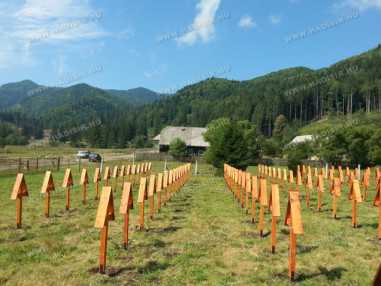
The restored military cemetery in Úz valley
“In Transylvania, there is an urgent need for the establishment of a central military cemetery. There are a lot of graves there that need exhumation anyway, either because the dead heroes are not buried in a cemetery, or because the condition of the given cemetery is unworthy of the dead soldier heroes resting there. We need to deal with this issue in the near future", the head of the department said.
Speaking about the tasks for 2015, he said that in connection with the centenary of the First World War, the Hungarian war grave care experts would like to visit the area of Isonzo and Doberdo. Next May it will be 100 years since Italy went to war, and the bloody military operations started at the end of June. Besides, 2015 will mark the 70th anniversary of the end of World War II, and the war grave care experts will have a lot of tasks related to this anniversary, Lt.-Col. Roland Maruzs said.
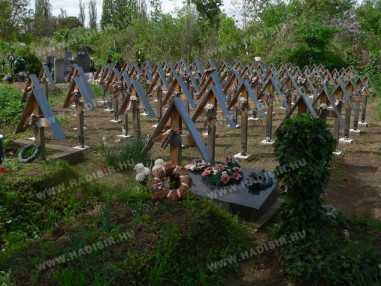
Hungarian military cemetery in Ukraine
Photo: hadisir.hu and archives